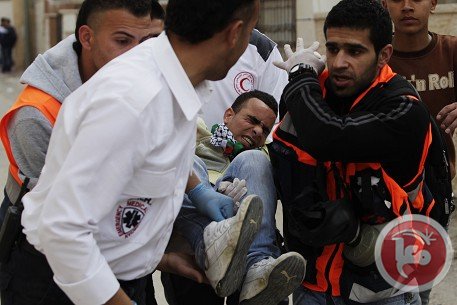Tag: Land Day
-

Swedish peace activist beaten up by Israeli Occupation Forces
by Jonas Weber and Jeff 1 April 2012 | International Solidarity Movement, West Bank A Swedish peace activist at the Land Day demonstration in Qalandia, outside of Ramallah, was arrested. During the arrest he was kicked and beaten by the Israeli soldiers. “It happened so fast, I never understood what was going on before I…
-

Photos: “Land Day across Israel and Palestinian territories”
30 March 2012 | Denver Post Land Day, which began in 1976, marks the day Israeli forces killed six Palestinians during a protest against Israeli occupation of what Palestinians consider to be their land. Palestinians around the world will commemorate Land Day with protests and demonstrations. Read more: Photos: Land Day across Israel and Palestinian territories…
-

Red Crescent medics treat 339 protesters in the West Bank
30 March 2012 | Ma’an News Agency BETHLEHEM (Ma’an) — The Palestinian Red Crescent treated 339 protesters on Friday at protests around the West Bank to mark Land Day, a spokesman said. Muhammad Ayyad told Ma’an that five people were seriously injured and 55 hospitalized as protesters commemorated six Palestinians who were killed by Israeli…
